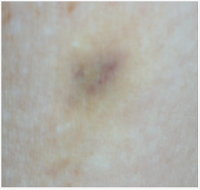Whitewater Conspiracy
The Whitewater conspiracy starts off with a land purchased in 1978. Bill and Hillary Clinton joined with the McDougals to borrow $203,000 to buy land in Arkansas Ozark Mountains. McDougal
Soon leaves his political job and owns a bank. Over the course of the next decade McDougal loans the Clintons money for various things having to deal with the Madison Gauranty. In 1990, McDougal is aquitted, and the Federal Resolution Trust Corp. starts investigating the causes of Madison’s failures in 1992. In June 1993, Deputy White House Council Vincent Foster files three years of delinquent Whitewater corporate tax returns. However, in July 1993 Foster is found dead in a Washington area park, and police rule the death a suicide. Federal investigators were not allowed to access Foster's office immediately after the discovery, but the White House was able to enter Foster‘s office shortly after his death, which gave a rise to speculation that the files were removed from his office. Many speculate that the files were removed it to protect the Clintons from a fraud charges. And others speculate that the Clintons hired someone to kill Foster because he had information that proves that they were involved in the fraud charges in the Whitewater-Madison case. Overall, the Clintons look very guilty for fraud charges and involvement in the killing of Foster because they thought he knew about their involvement. Fast forward to January 15, 1996, when Republicans suggest billing documents may have been withheld from their investigation to disguise how much work Hillary Clinton had done for Madison Gauranty, but the White House issues a denial. January 22, 1996, Kenneth Starr Subpoenas Hillary Clinton in a criminal probe to determine if the records were intentionally withheld, and this is the first time a wife of a sitting President has been subpoenaed. January 26, 1996 Hillary Clinton testifies before a grand jury about the discovery and content of the billing records. April 22, 1996 David Hale, the formal owner of a government funded lending company who has pleaded guilty to two felonies, testifies at Whitewater trial that in early 1985 the governor Bill Clinton pressured him to make a fraudulent charge of $300,000 to loan to Susan McDougal, and asked for his name be kept out of the transaction. April 28, 1996 Clinto testifies on video tape as a defense witness for just over four hours, and he denies Hills charge, then the tape is played to the Whitewater trial jury on May 9. Governor Tucker and the McDougals are convicted of nearly all the fraud and conspiracy charges Starr lodged against them 10 months earlier. June 17, 1996 a second Whitewater trial begins, and Arkansas bankers Herbie Branscum jr. and Robert Hill or accused of illegally using bank funds to reimburse themselves for political contributions, including contributions to Clinton’s State governor and presidential campaigns. June 18, 1996 the Senate Whitewater Committee finishes its investigation. Republicans and Democrats remain divided in their respective reports on whether the Clintons committed any ethical breaches. July 7, 1996 President Clinton testifies on tape for the second Whitewater trial. July 15, 1996 Jim Guy Tucker resigns as governor of Arkansas. July 18, 1996 President Clinton’s videotaped testimony from July 7 is aired at the trial. In it, Clinton denies naming the two defendants to unsalaried to state posts in exchange for contributions to his 1990 state governor campaign. A major setback for Starr's investigation was when Branscum and Hill were cleared on four counts of bank fraud by a federal jury. August 20, 1996 Susan McDougal is sentenced to two years in prison for her role in obtaining an illegal loan for the Whitewater venture. November 24, 1996 Clinton’s former campaign strategist for the 1992 election, James Carville, announces plans to attack Starr as a partisan hatchet man with a right-wing agenda. The case is obviously very complicated, and by November 19, 1998, which was the first day of impeachment hearings, Starr clears Clinton in relation to unknown firings at the White House in 1993, and the improper collection of FBI files revealed in 1996. He also says his office drafted an impeachment referral stemming from Whitewater in 1997, but decided not to send it because the evidence was insufficient. In conclusion, the Whitewater conspiracy suggests that the Clintons had an involvement with the Whitewater-Madison fraudulent charges, and they hired someone to kill Foster and make it look like a suicide because they thought he had evidence against them.
Works Cited
Washington Post Company. “Whitewater Timeline.” The Washington Post, WP Company, 1998, www.washingtonpost.com/wp-srv/politics/special/whitewater/timeline2.htm.


Comments
Post a Comment